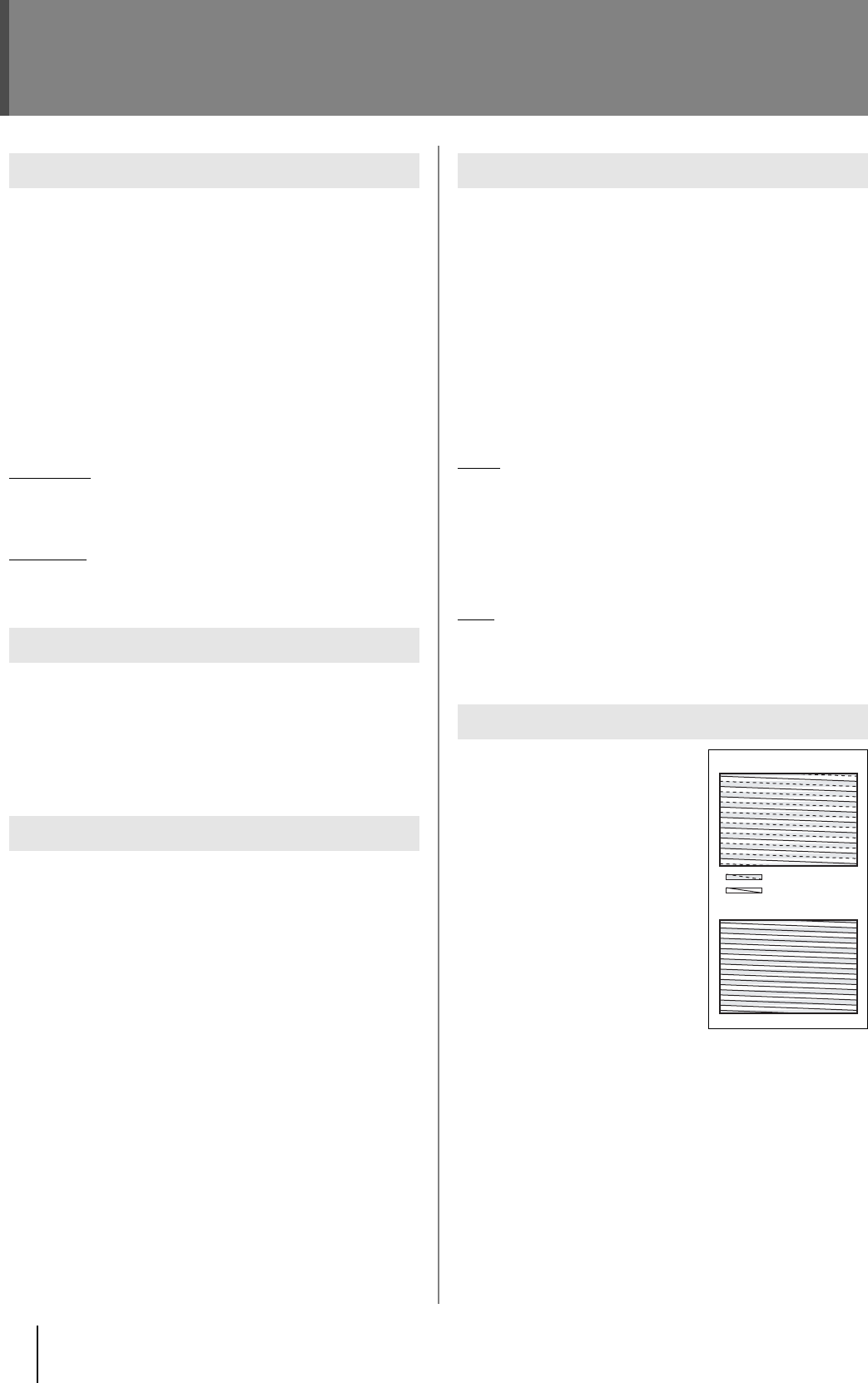
38
Input / Output Signal
HDV (High Definition Video) is the standard term used for the format to
record High-definition television (HDTV) onto DV tape used in digital
video cameras.
HDV uses MPEG-2 for video compression. DV uses a method that
compresses each video frame individually, but HDV realizes high
definition recording with the same data volume as DV by using MPEG-
2 inter-frame prediction. Because of this, although high definition video
has considerably more data than SD video, it can secure the same
amount of recording time as DV.
MPEG-1 Audio Layer-2 is used for audio compression. The sampling
frequency is 48 kHz, and the 16-bit stereo audio is compressed with a
bit rate of 384 kbps.
The “HDV Standard” defines two types: “HDV 1080i,” interlaced
scanning with 1080 lines of effective scan lines, and “HDV 720p,” 720
lines of progressive scanning.
HDV 1080i
The HDV1080i method compresses with about 25 Mbps MPEG-2
video and records 1440 x 1080 pixels, interlaced video of 60/50 fields
per second (NTSC/PAL).
HDV 720p
The HDV 720p method compresses with about 19 Mbps MPEG-2
video and records 1280 x 720 pixels, progressive video of 30 or 60/25
or 50 frames per second (NTSC/PAL).
SDI (serial digital interface) is a standard defined by SMPTE (Society
of Motion Picture and Television Engineers) and is used widely today
in the broadcast and video production industries. The SDI standard
prescribes methods for transmitting non-compressed serial digital
video data using a BNC cable (video coaxial cable) between devices
in the production facility.
The SDI standard is of two types: standard definition (SD) SDI and high
definition (HD) SDI.
DV (Digital Video) is the SD television image quality digital video
standard. It supports both NTSC and PAL TV standards. One frame of
data has video and audio combined. The bit rate is about 27 Mbps.
Video compression is only performed with interlaced. Because
compression is not performed along the time axis, as with MPEG,
compression is about 1/5, but a merit is that video editing can be
performed simply at the frame level.
Audio has sampling frequencies of 48/44.1/32 kHz with non-
compressed linear PCM. The quantization bit rate is 16 bit in stereo. In
32 kHz mode, the quantization bit rate is 12 bits, so four-channel
recording is possible.
DVI (Digital Visual Interface) is a video output interface standard
designed for maximizing image quality on display devices that focus on
digital video, such as LCD monitors. This standard is designed to send
uncompressed digital video data to the display. There is also partial
compatibility with the HDMI standard. It also supports analog video
interfaces (VGA signals) for existing CRT displays, as well as digital
interfaces.
The DVI connector on a device can have one of three names,
depending on the signals it carries.
DVI-D (digital)
DVI-A (analog)
DVI-I (digital and analog)
Note: According to the standard, a cable length of up to 5 meters is
permissible.
HDMI
HDMI (High-Definition Multimedia Interface) is for AV home electronics
that adds audio transmission functionality, copyright protection
functionality, and color difference transmission functionality to DVI. To
input HDMI to this device, use a separately purchased DVI-I HDMI
conversion cable and connect it to the DVI connector.
If a DVI-I HDMI conversion cable is used, then the audio output with
HDMI is not output to the DVI side.
RGB
This is one of the video outputs for computers and is sometimes called
VGA output or analog output. In general, it is output using a D-Sub 15-
pin (DB-15) connector. For this device, a commercially available DVI
adapter (VGA-DVI) can be used in the DVI-I connector for input.
Video gives the appearance of movement
by continuously displaying screens
(frames) within a fixed time. To transmit
screens with an electronic signal, the
image is cut into numerous horizontal
lines as shown in the figure and is
transmitted as "threads" of electronic
signals. These "threads" are called scan
lines. There are two methods of arranging
scan lines: the "interlaced method (i)" and
the "progressive method (p)." (See figure
at right.)
The interlaced method divides the fields
into ODD and EVEN fields and transfers
them at a rate of 59.94 fields per second
for NTSC. The two fields are displayed
alternately, but the image appears to
move smoothly with the 59.94 frames due to the image persistence of
human vision. The actual number of frames (frame rate) displayed
each second is 29.97 frames for NTSC and 25 frames for PAL.
The progressive method scans screens without interlacing and
displays images in frame units. For example, with 720/59.94p, 59.94
image frames are displayed each second; with 720/50p, 50 image
frames are displayed each second. However, the time code is the
same as for the interlaced method, so when the time code advances
one frame, the progressive method video advances two frames.
HDV
SDI
DV
DVI
Interlaced and Progressive
Interlace scan
Progressive scan
ODD field
EVEN field


















